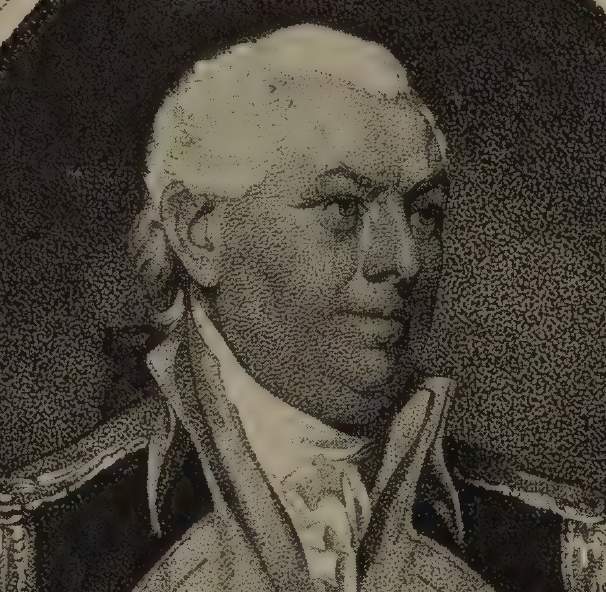John Barry (1745–1803) was a naval officer and ship owner, frequently called the “Father of the American Navy.” He served in the Continental Navy during the American Revolutionary War and in the United States Navy during the Quasi-War. He was born on March 25, 1745, in Ballysampson near Wexford, Ireland. The designation bestowed upon him by Joseph Dennie in the Port Folio for July 1813, where, in a footnote to a sketch of Barry, he wrote:
“So many of the distinguished naval men of the present day commenced their career under Commodore Barry that he may justly be considered as the ‘father of our navy.’
According to tradition, he “came to America with his mother,” evidently while a child. He first traveled to Jamaica and then Philadelphia, where he found employment with Mr. Meredith and attracted General Cadwalader’s attention. His employment was on vessels owned and operated by those merchants. From records, it appears that he was given command of the schooner, Barbados, in 1766, when he was just twenty-one, and in that year the vessel was cleared for Barbados.
For the following ten years, young Captain Barry was never without a ship, usually traveling to the West Indies or Nova Scotia. In 1775, he sailed for England. The day he returned, October 13, 1775, the Continental Congress resolved to construct two armed cruisers with authority to capture British Army supply vessels.
These were named the Lexington and the Reprisal. Barry was commissioned captain of the former on December 7, 1775, and Captain Wickes commandeered the Reprisal. Captain Barry is said to have been the first Catholic appointed to the Continental service (Scharf and Westcott’s “Hist of Phila”).
Preble says, “The brig Lexington, mounting fourteen 4-pounders, commanded by Captain John Barry, has been credited as the first of the new Continental marines to get to sea and to display the striped flag upon the ocean.” Cooper, in the earlier editions of his “Naval History,” made this assertion, but, in his edition of 1856, he said that examination of the private papers of Captain Barry has shown him that he was employed on shore in the Delaware for a short time after Captain Hopkins got to sea.
He captured the British tender, Edward, in action on April 17, 1746, which was the first capture in actual battle, of a British warship by a regularly commissioned American cruiser (“Dict. Of Nat). Interestingly, the last significant sea flight between American and British forces, in the Revolution, was a battle by Captain Barry, in the Alliance. He fought a British ship thought to be the Sibyl, which had 28 guns. This action was fought during a run to Havana when the enemy escaped.
John Barry also volunteered for the American Army and participated in the Trenton campaign. He received Washington’s congratulations for his “gallantry and address,” in capturing several transports carrying supplies for the British Army. John Barry was a wealthy ship owner, and at the end of the war, he retired to private life. In 1794, however, when Congress ordered a navy, consisting of six frigates, John Barry was commissioned senior captain. He was placed in command of the frigate United States, 44 guns.
This high place was offered to John Barry, according to Cooper, because “of all the naval captains that remained,’ he was “the one who possessed the greatest reputation for experience, conduct, and skill.” Barry was at the head of the navy at the time of his death, which occurred in Philadelphia at his residence on Chestnut Street, above Ninth. He was laid in a vault in St. Mary’s (R. C.) Graveyard. The vault contains a long epitaph. The one originally written by Dr. Benjamin Rush, whose draft is in the Ridgway Library, was changed. This is when the present tomb, replacing the old one, was erected in 1876.
John Barry has two statues in Philadelphia. One, the marble in the Centennial Fountain, erected by the Catholic Total Abstinence Society, in 1876-77; and the bronze statue, set up in Independence Square, in 1907. This was a gift to Philadelphia from the Friendly Sons of St. Patrick. John Barry was the first American to command a warship sailing under the flag of the Continental Army. John Berry died on September 13, 1803 (aged 58) in Philadelphia, Pennsylvania, United States. His body rests in the churchyard of St. Mary’s Roman Catholic Church.
Read More: The King Who Lost Spain’s Power
